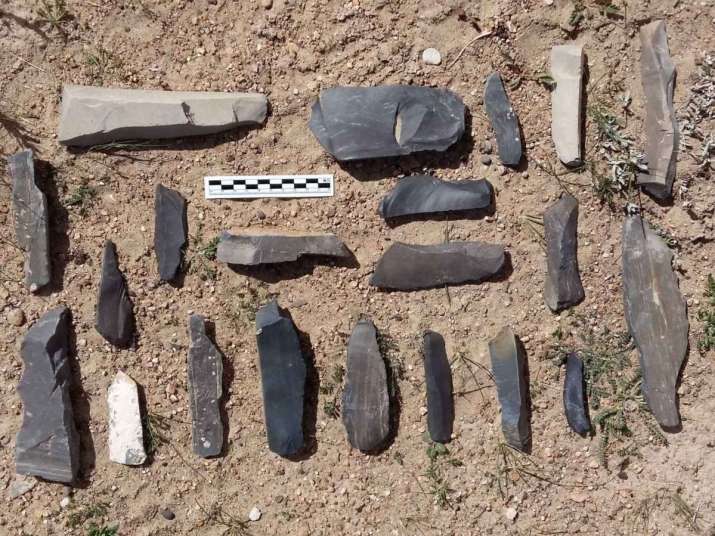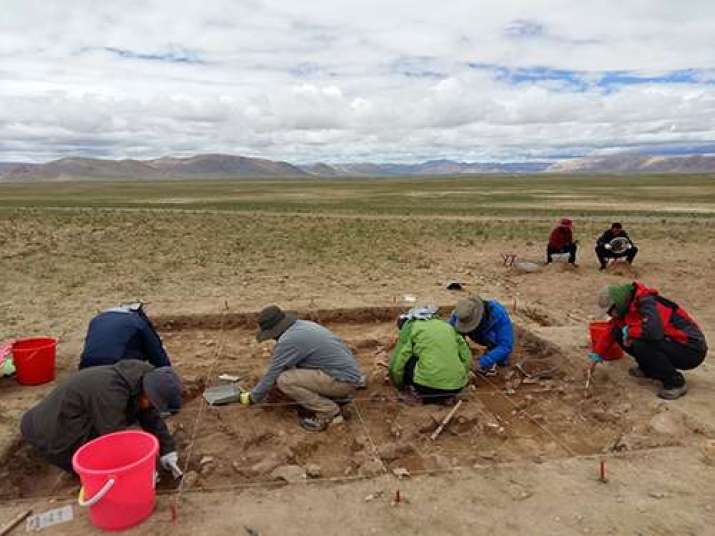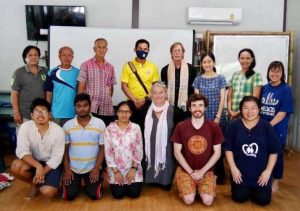
A group of researchers have found evidence of human activity on the Tibetan Plateau, dating back to 30,000–40,000 years ago, at least 15,000 years earlier than was previously thought.
The researchers led by Xiaoling Zhang, an archaeologist at China’s Institute of Vertebrate Paleontology and Paleoanthropology, found more than 3,600 stone artifacts in Nwya Devu, a part of the central Tibetan Plateau. The artifacts (stone tools) were found in a layer of dirt approximately five and a half feet deep, dating back at least 30,000 to 40,000 years ago, making Nwya Devu the Tibetan Plateau’s oldest well-dated sign of human activity, and at 15,000 feet above sea level, also the world’s highest-altitude archaeological site that is more than 10,000 years old.
The tools were made of black slate, which can be found all over the site. While it is not the most ideal material for stone tools, early humans on the Tibetan Plateau had nothing better available to them for many miles.
Previous findings indicated that hunter-gatherers were living on the Tibetan Plateau 15,000 years ago, and many experts argued that there was no permanent habitation on the plateau until 6,000–7,000 years ago when the Tibetans knew how to grow barley and herd yak and sheep. Some archeologists, however, hoped evidence would be found of an older human presence.
Before the present study, convincing evidence of human activity predating 15,000 years ago was scarce. Intriguing stone tools were found, but mainly in shallow sediment layers that had already been disturbed, which made a reliable dating of the tools impossible.
Zhang’s team of researchers however found the tools in an undisturbed layer of dirt, and then relied on crystals in these sediments to date the artifacts. The crystal particles in the sediment recording the natural radiation in the environment and are set or re-set by sunlight, acting much like a stopwatch. Measurements by Zhang’s team indicated the sediment layer containing the tools had last been exposed to sunlight 30,000 to 40,000 years ago.

Based on the findings, experts are speculating that the site might have been a seasonal workshop and camping site, used by hunter-gatherer groups who followed herds of gazelles, horses, yaks, and migratory birds (who today still stop at lakes just miles from site to recuperate on their migratory journey) to the Plateau.
The Tibetan Plateau, also known as the roof of the world, is one of the harshest environments on the planet. It encompasses approximately 2,500,000 square kilometers of land with an average elevation of 4,500 meters (14,800 ft). Temperatures on the plateau can drop to −40 °C, and the cold, thin air makes it difficult to breath.
While no human DNA has been found on the Nwya Devusite, genetic studies provide an intriguing clue how people might have survived in these conditions 30,000 years ago. One study found that people living in the region 30,000 to 60,000 years ago, had relatively high variations of Neanderthal and Denisovan DNA, two of our now-extinct sister species. Some of this Denisovan DNA was passed to modern Tibetans.* In particular, the prevalence of a Denisovan variant of the gene EPAS1among Tibetans, might help them survive and thrive in the harsh environment and high altitude of the Tibetan Plateau as it helps their blood absorb more oxygen. **
The tools found at the site also show a similarity with tools found in Mongolia and Xinjiang, suggesting an interaction of the humans on the Tibetan Plateau and the people living in Siberia and Mongolia.
Future excavations at Nwya Devu might be able to clarify the story of early human presence on the Tibetan Plateau.
* Altitude adaptation in Tibetans caused by introgression of Denisovan-like DNA
** Genetic signatures of high-altitude adaptation in Tibetans
References
Zhang et al. 2018. “The earliest human occupation of the high-altitude Tibetan Plateau 40 thousand to 30 thousand years ago.” ScienceVol. 362, Issue 6418, pp. 1049-1051
See more
Ancient tools suggest Tibetan plateau inhabited by humans 30,000 – 40,000 years ago(The Tibet Express)
Earliest evidence for humans on the ‘roof of the world’ found (National Geographic)











